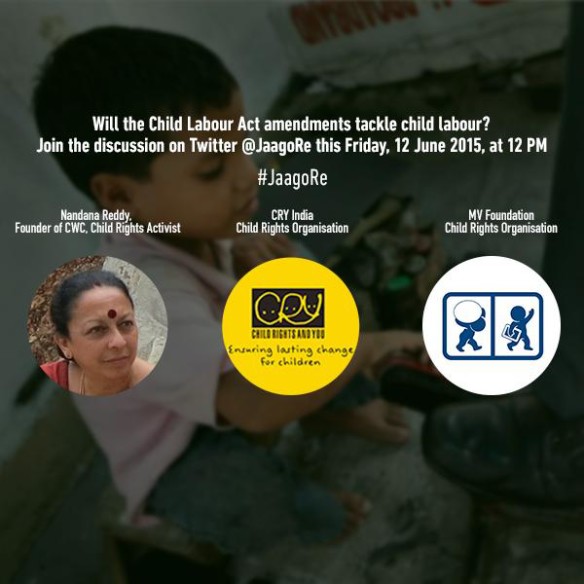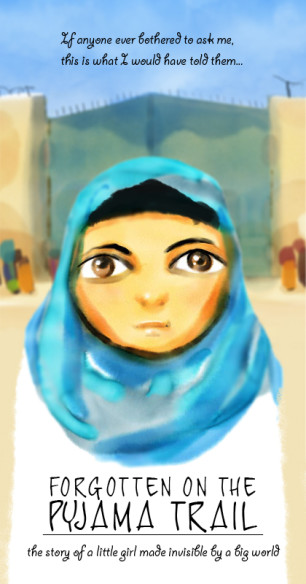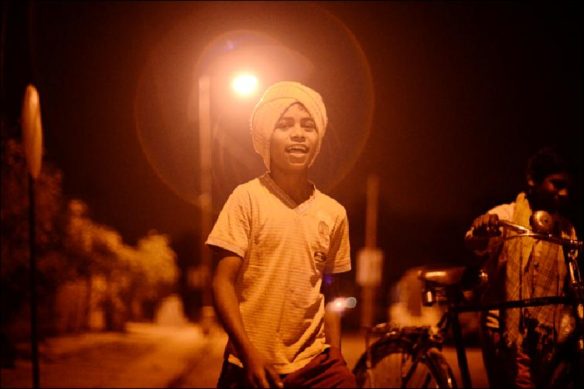CWC Newsletter – Issue 05 June 2015
In this issue:
- Press Release: Children need support to bring an end to child labour and to express themselves
- Jaago Re: Join us in a Twitter chat on 12 June!
- Forgotten on the Pyjama Trail
- Critical research and writing on child labour
Press Release: Children need support to bring an end to child labour and to express themselves
By: The Concerned for Working Children
Date: 12 June 2015
On the occasion of Anti-child labour day
At a meeting of the International Working Group on Child Labour at Bangalore in 1994, Ramu, a fifteen year old member representing the Bhima Sangha (Union of Working Children) strongly asserted: “Children need support to bring an end to child labour and to express themselves. Our previous experience has been that when children began to speak, grown-ups get up and leave. I would like to ask those here at this meeting to have patience when children speak and listen to them until they finish. You should tell as many people and children, including those who go to school, about our situation.”
It has been more than twenty years and Ramu’s hope for working children to be heard on the issue of child labour, remains unrealized. Thirteen years since ILOs launch of the World Day Against Child Labour in 2002, the voices of children are still missing from the international dialogue on child labour. This not only implies that international bodies like the ILO are themselves in a dilemma of how to truly actualize the right to be heard that is embedded within the UN Convention on the Rights of the Child (UNCRC) but also, more importantly, that the many finer points of the contextualized realities of the children, do not get fair representation in the conversation.
This year, ILO focuses on the need to strengthen qualitative education as an important intervention which helps children access better life choices. This move comes alongside its push for aligning the ages of compulsory education and admission to employment as per the ILO’s Convention No. 138 that states the minimum age of employment “shall not be less than the age of completion of compulsory schooling and, in any case, shall not be less than 15 years.” While noone disagrees with education as an important tool to broaden horizons, this articulation of education as ‘compulsorily’ being the space that children are to occupy versus a space they ‘choose’ to occupy, is a telling one. It points to us that ILO continues to ideologically view children as passive recipients of adult imposed structures instead of people with agency who are learning to make their way through life by actively engaging with it. In so seemlessly conjoining it with the issue of child labour it seems to forget that a right cannot become a compulsion for the rights holder.
Conversations with children reveal that their experiences, understanding and need for education differ deeply, as they are expected to in a heterogeneous world. For education to become a viable choice for working children it needs to fit itself into the unique shape of the marginalized children’s lives. It needs to respond to the timings of their water supply, to the support structure within their families to manage incomes and siblings, to their need for security in accessing educational spaces and many such issues. It also needs to recognize that all work is not bad. As even ILO has begun to recognize, ‘decent work’ is an equally empowering educational journey for children. Many working children have shared how work brings them dignity and independence. We need to recognize that education is a much larger concept for children, deeply intertwined with living and being, not to be simply reduced to the passing of lessons in cloistered spaces.
In India, the standard operating procedure to ‘deal’ with working children is to raid spaces and rescue them. Children’s narratives have often revealed these ‘rescues’ to be deeply traumatizing experiences where they are dragged about with little or no explanation and much coercion. Often arbitrarily institutionalized or under threat enrolled into unfriendly schools – longitudinal studies of these cycles of ‘rescue’ show how most children return back to old work spaces. This is due to the fact that our institutions continue to fail children. They do not ask children what compels them to work, to leave or to stay in schools and give standardized one-fits-all solution to their complex needs. Until we listen to children, working solutions for working children’s problems will continue to remain out of reach.
Read the press release in Kannada
Read the press release in French
Read the press release in Spanish
Jaago Re: Join us in a Twitter chat on 12 June!
Join us @workingchildren as we speak on the ‘Pros and Cons of Amendments to Child Labour Act’ in a Twitter Expert Chat organised by Tata Tea Jaago Re group on 12 June at 12 pm!
Forgotten on the Pyjama Trail
‘Forgotten On The Pyjama Trail’ is an animated documentary inspired by true events. The story is narrated by a little girl, Fathima, who works in a Moroccan garment factory in order to support her family. The documentary delves into how a simplistic understanding of child labour can sometimes result in negative consequences for children. It stresses on the need to listen to children and understand their experience of work from their unique contexts. coming soon…
Critical research and writing on child labour
To expand our collective understanding of child work with its complexities we share the following readings:
a. Invisible Hands by Sarika Malhotra (Business Today, June 7th, 2015)
“In 2010, the US Ministry of Commerce reportedly wrote to the Indian government that the Obama administration was considering a ban on imports of granite and sandstone from India, as mines in Rajasthan were violating international labour standards. However, experts say child-labour-free cobbles is not a solution; it is a band-aid approach to a deeper issue. (…) Meanwhile, the civil society hails the Child Labour (Prohibition and Regulation) Amendment Bill as a step in the right direction. But whether things will change on the ground remains to be seen, considering the socio-economic realities in India.”
Children work in many industries but due to long and opaque supply chains the nature of their work and the circumstances these children work in, are unknown. Many chains end in the informal sector, outsourced to spaces such as homes and family run enterprises. Malhotra argues these are difficult to monitor and regulate and therefore the risk of exploitation of children and their families is high. The current child labour law does not have enough teeth to protect children and the new Child Labour Amendment Bill 2012 is also not able to monitor and regulate this informal sector.
b. Breaking the Chain: Ending the Supply of Child-mined Minerals by Hahn, Hayes & Kacapor (2013)
“Child labor in mining is a sensitive issue and it is entirely understandable that responses to reports of child mining may include recommendations for consumers to simply stop purchasing minerals from those mines where children may be working. However, such a response, no matter how well intentioned, may result in increased hardship for the children and their families, and could push children farther away, beyond the reach of care and support services.”
Pact World conducted a study among children working in mines in Congo to find out what pushes children into such dangerous work and why they continue. The research showed that children had several reasons and while poverty was one of them, other socio cultural dynamics and lack of viable alternatives, made children prioritise working in the mines over other options like school. To get the children out of the mines, the authors argue that a holistic, context specific approach, with a focus on prevention and regulation, will be required. According to the authors, a ban approach, however well intended, will not have a sustainable and lasting impact on the children’s lives and could result in more hardship for them and their families.
“Perhaps most relevant to our findings, in February 2013 a bill was introduced to the Parliament of India calling for the abolition of all forms of child labour. Among other provisions, the proposed bill also calls for increased monitoring and punishment for violators of such laws. The results of our paper caution against such policies in the presence of broader institutional and market failures. Even if the proposed bill was aggressively enforced and actually succeeded in reducing child labour – and it is plausible that a ban with no exemptions for household enterprises or any sectors might be easier to enforce – the resulting decline in income for the families affected could have negative consequences for the adults and children in the household including substantial declines in nutrition, education and health expenditures”.
According to Bharadwaj, Lakdawala and Li, a well-intended ban imperfectly imposed, has many unintended consequences. The research compares the situation before and after the ban in 1986. After the ban employers lowered the wages of children to save money for possible fines, which meant income loss for poor households. This compelled families to supply more child labour to make up for the income loss. For example siblings, in the 10-13 age group are 5-6% more likely to work after a ban. A ban approach with declining income for families could have negative consequences for the livelihood of poor families. The authors argue that a well-intended ban turns out to be different in reality and is not sure to reduce child labour.
“Clearly the worst forms of child labour need urgent action. However, the solution is not necessarily a ban. Conditions sometimes can be changed to reduce the risk of harm. Working conditions can be rendered benign or even beneficial, which is more constructive than simply banning work that children often need or want for their own and their family’s survival.”
Parkhurst argues that work is neither all good or bad, it is often both. In the article Parkhurst uses several examples that tell us why children are working and how work often gives children control over their life. Parkhurst speaks how his research suggests that the solution lies in listening to the understanding children have of their work and that strategies should aim at reducing poverty and creating protective systems. Parkhurst suggests flexibility in schools and to create awareness in balancing work and school. The research referred to in this article has been compiled into a book, Children’s Work and Labour in East Africa: Social Context and Implications for Policy, edited by Alula Pankhurst, Michael Bourdillon and Gina Crivello, to be released shortly.
“A more child-centred approach to understanding the nature of child work necessitates understanding it from the perspective of the child, differentiating it from the viewpoint of adults”.
This discussion paper of the International Working Group on Child Labour explores how children can be included in the child labour debate as an extension of their right to be heard. The paper argues how understanding of children’s work is defined by adults, without taking into account the realities children live in and how children perceive those realities. The IWGCL argues that laws and policies from an adult perspective, without the children’s views, fails to be holistic and child-centred. According to them, children should be seen as protagonists who, once organised and collectivised, can demand and establish their rights both as children and workers.





